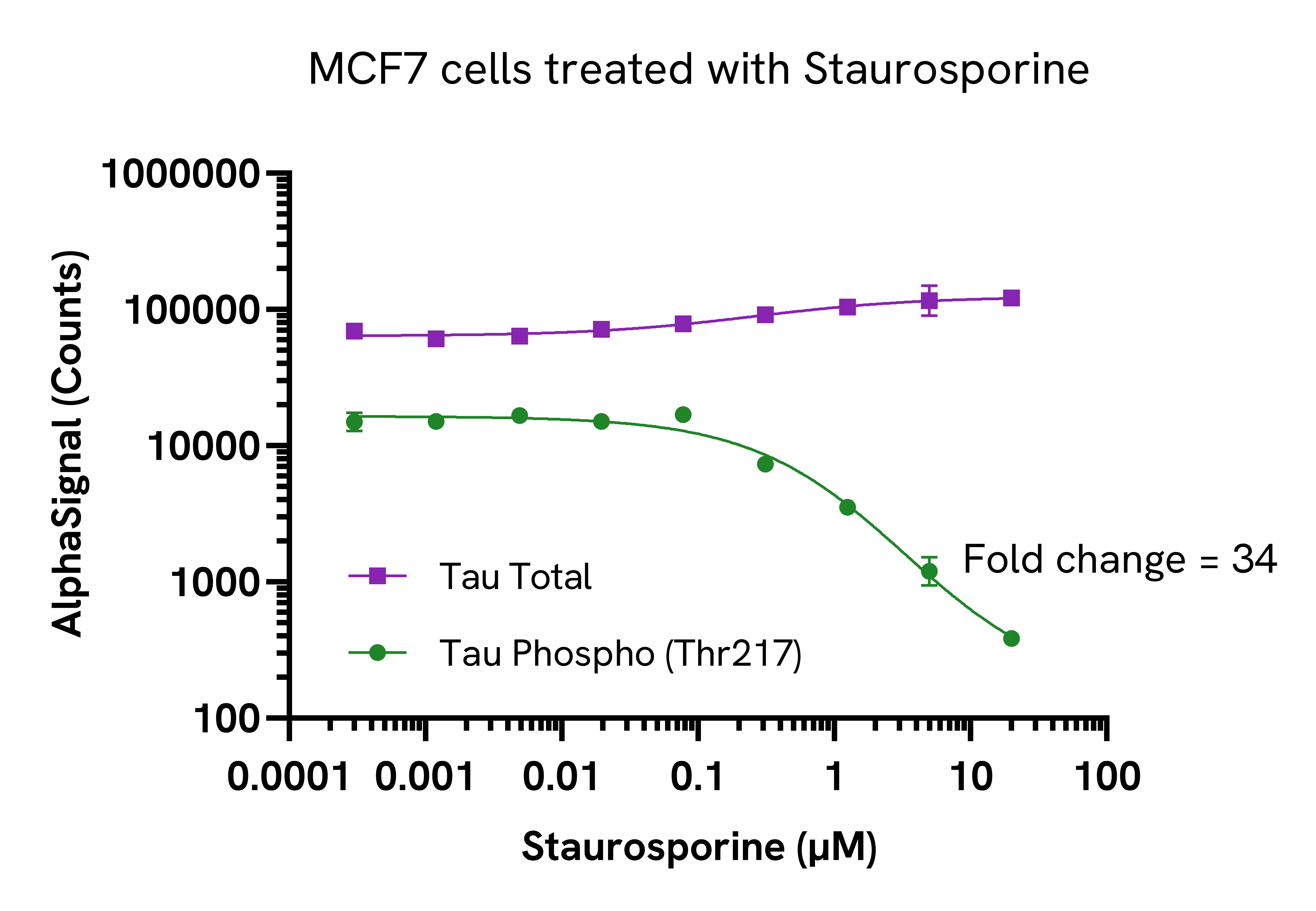

AlphaLISA SureFire Ultra Human Phospho-Tau (Thr217) Detection Kit, 50,000 Assay Points
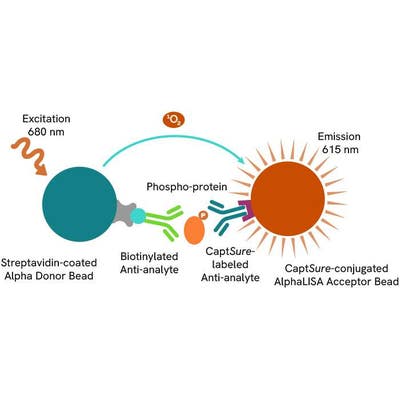
AlphaLISA SureFire Ultra Human Phospho-Tau (Thr217) Detection Kit, 50,000 Assay Points
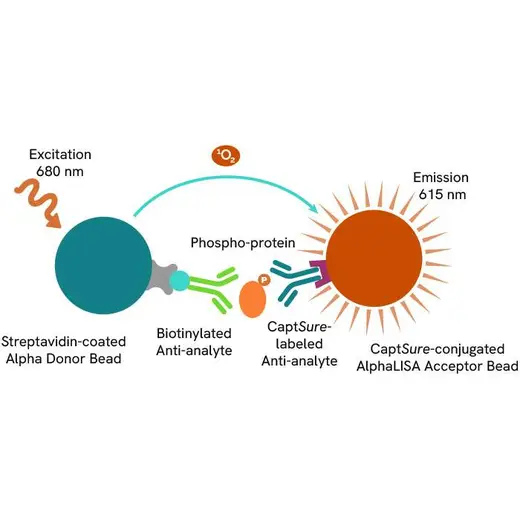

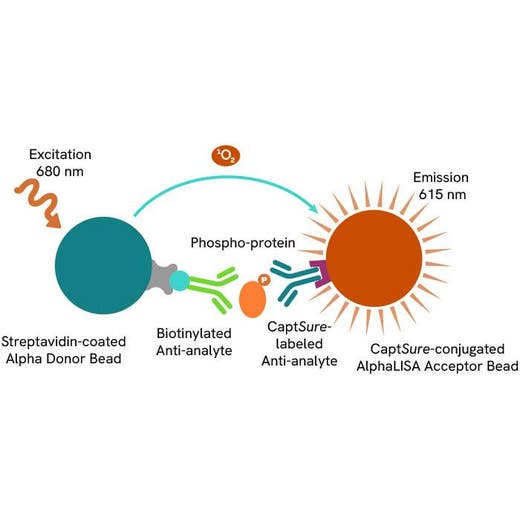

The AlphaLISA™ SureFire® Ultra™ Human Phospho-Tau (Thr217) assay is a sandwich immunoassay for quantitative detection of phospho-Tau in cellular lysates using Alpha technology.
| Feature | Specification |
|---|---|
| Application | Cell Signaling |
| Sample Volume | 10 µL |
The AlphaLISA™ SureFire® Ultra™ Human Phospho-Tau (Thr217) assay is a sandwich immunoassay for quantitative detection of phospho-Tau in cellular lysates using Alpha technology.


AlphaLISA SureFire Ultra Human Phospho-Tau (Thr217) Detection Kit, 50,000 Assay Points


AlphaLISA SureFire Ultra Human Phospho-Tau (Thr217) Detection Kit, 50,000 Assay Points


Product information
Overview
Tau proteins, derived from tubulin-associated units, play a pivotal role in the pathogenesis of Alzheimer’s disease (AD). Hyperphosphorylated Tau aggregates form filaments, which can further condense into neurofibrillary tangles. These Tau aggregates, often referred to as ‘seeds,’ can propagate pathology from cell to cell, similar to prion transmission. Effective therapeutic strategies for AD include medications that modulate Tau hyperphosphorylation and reduce Tau aggregation.
The AlphaLISA SureFire Ultra Human Phospho-Tau (Thr217) Detection Kit is a sandwich immunoassay for the quantitative detection of phospho-Tau in cellular lysates, using Alpha technology.
Formats:
- The HV (high volume) kit contains reagents to run 100 wells in 96-well format, using a 60 μL reaction volume.
- The 500-point kit contains enough reagents to run 500 wells in 384-well format, using a 20 μL reaction volume.
- The 10,000-point kit contains enough reagents to run 10,000 wells in 384-well format, using a 20 μL reaction volume.
- The 50,000-point kit contains enough reagents to run 50,000 wells in 384-well format, using a 20 μL reaction volume.
AlphaLISA SureFire Ultra kits are compatible with:
- Cell and tissue lysates
- Antibody modulators
- Biotherapeutic antibodies
Alpha SureFire kits can be used for:
- Cellular kinase assays
- Receptor activation studies
- High-throughput drug screening
Specifications
| Application |
Cell Signaling
|
|---|---|
| Automation Compatible |
Yes
|
| Brand |
AlphaLISA SureFire Ultra
|
| Detection Modality |
Alpha
|
| Host Species |
Human
|
| Lysis Buffer Compatibility |
Lysis Buffer
|
| Molecular Modification |
Phosphorylation
|
| Product Group |
Kit
|
| Sample Volume |
10 µL
|
| Shipping Conditions |
Shipped in Blue Ice
|
| Target |
Tau
|
| Target Class |
Phosphoproteins
|
| Target Species |
Human
|
| Technology |
Alpha
|
| Therapeutic Area |
Neuroscience
|
| Unit Size |
50,000 Assay Points
|
Assay validation
Inhibition of phospho-Tau (Thr217) in endogenous cellular models
MCF7 cells were seeded in a 96-well plate(40,000 cells/well) in complete medium, and incubated overnight at 37°C, 5% CO2. The cells were treated for 6 hours with increasing concentrations of Staurosporine prepared in media containing 1% FBS. After treatment, the cells were lysed with 100 µL of lysis buffer for 10 minutes at RT with shaking (350 rpm). Tau Phospho(Thr217) and Total levels were evaluated using respective AlphaLISA SureFire Ultra assays. For the detection step, 10 µL of cell lysate (approximately 4,000 cells) was transferred into a 384-well white OptiPlate, followed by 5 µL of Acceptor mix and incubated for 1 hour at RT. Finally, 5 µL of Donor mix was then added to each well and incubated for 1 hour at RT in the dark. The plate was read on an Envision Nexus™ using standard AlphaLISA settings.
As expected, Staurosporine (a broad-spectrum protein kinase inhibitor) triggered a dose-dependent decrease in the levels of Phospho-Tau (Thr217).

SH-SY5Y cells were seeded in a 96-well plate (20,000 cells/well) in complete medium, and incubated for 96 hours at 37°C, 5% CO2. The cells were treated for 6 hours with increasing concentrations of Staurosporine prepared in media containing 1% FBS.
After treatment, the cells were lysed with 100 µL of lysis buffer for 10 minutes at RT with shaking (350 rpm). Tau Phospho(Thr217) and Total levels were evaluated using respective AlphaLISA SureFire Ultra assays. For the detection step, 10 µL of cell lysate (approximately 4,000 cells) was transferred into a 384-well white OptiPlate, followed by 5 µL of Acceptor mix and incubated for 1 hour at RT. Finally, 5 µL of Donor mix was then added to each well and incubated for 1 hour at RT in the dark. The plate was read on an Envision Nexus using standard AlphaLISA settings.
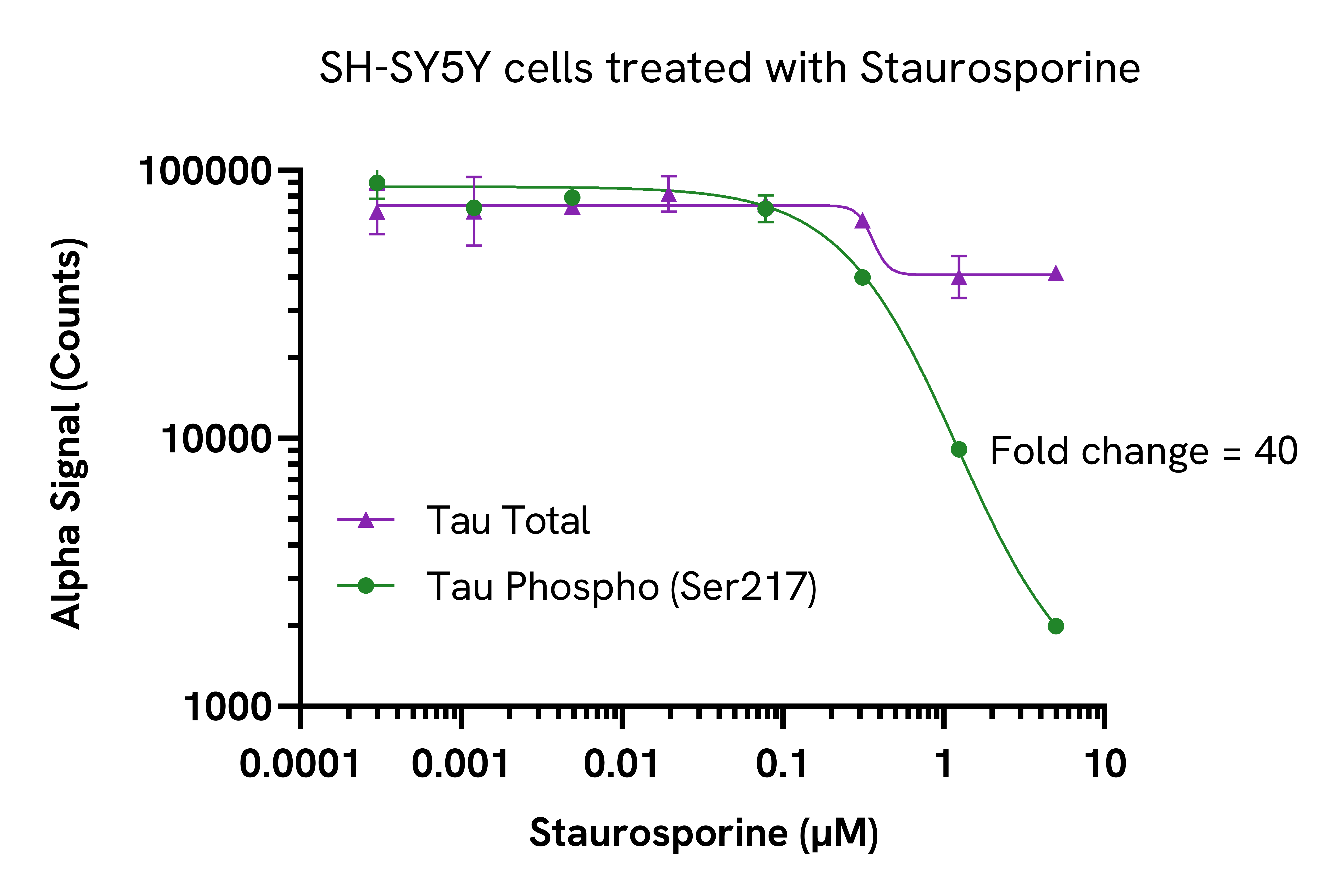
Resources
Are you looking for resources, click on the resource type to explore further.
Quantitative Assessment of Soluble TNFR1 Using the Human TNFR1 AlphaLISA ™ Kit
This technical note provides additional evidence of...
Assessing H3K36 Demethylation Using AlphaLISA Assay
This technical note gives you details about how AlphaLISA immunodetection...
Loading...


How can we help you?
We are here to answer your questions.




































